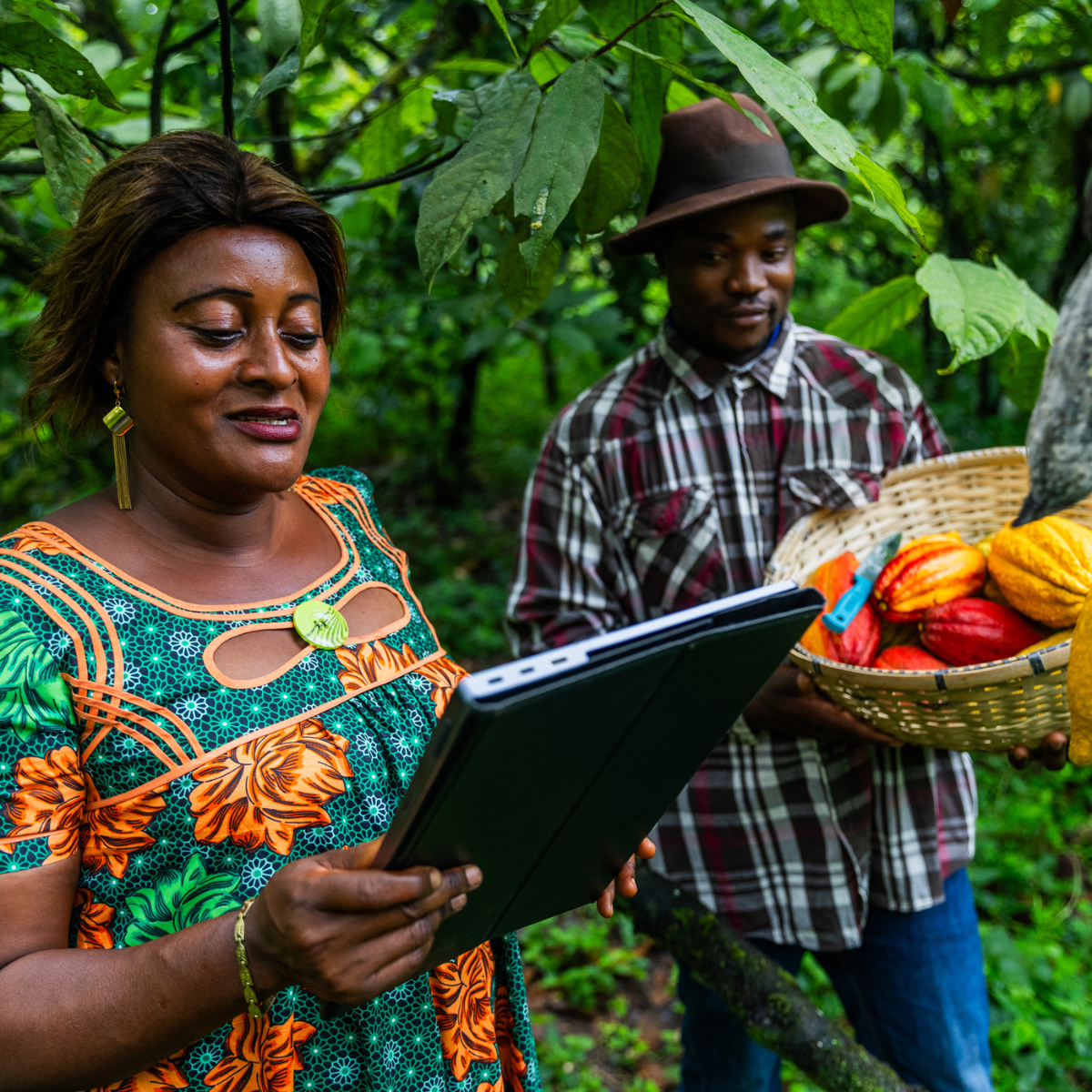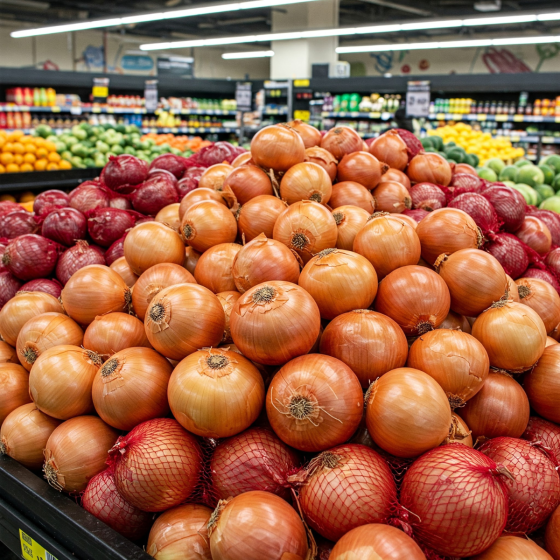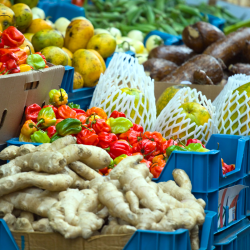Background and Context
Policy Overview
The National Agricultural Technology and Innovation Policy (NATIP) 2022–2027 stands as Nigeria’s strategic blueprint for agricultural revitalization, officially launched on 26 August 2022, by the Federal Ministry of Agriculture and Rural Development (FMARD). It emerges as the successor to the Agricultural Promotion Policy (APP) 2016–2020 and is seamlessly integrated into the broader aspirations of the National Development Plan (NDP) 2021–2025. The policy’s conceptualization was a collaborative effort, benefiting significantly from the insightful contributions of international partners including the United States Agency for International Development (USAID), the International Food Policy Research Institute (IFPRI), Michigan State University, and other reputable global institutions. This collaborative approach ensures that NATIP is not only locally relevant but also addresses contemporary global food system challenges, incorporating vital lessons gleaned from the vulnerabilities exposed by the COVID-19 pandemic.
Rationale
Nigeria’s agricultural sector, a perennial backbone of the economy, currently contributes approximately 24% to the nation’s Gross Domestic Product (GDP). Despite its significant contribution, the sector is plagued by systemic inefficiencies, predominantly low productivity per hectare, and a concerning reliance on food imports. In 2021 alone, Nigeria incurred a staggering N1.97 trillion in agricultural imports, a stark illustration of the productivity deficit, particularly in staples like rice, wheat, dairy, and This import dependency drains foreign exchange and creates vulnerability to global market fluctuations. Furthermore, the sector is perpetually threatened by escalating insecurity, particularly farmer-herder conflicts and banditry, which displace farmers and disrupt value chains. NATIP is strategically designed to transform this narrative, reimagining agriculture as a technology-driven, inclusive, and export-oriented sector, fundamentally aimed at poverty reduction, job creation, and robust economic diversification away from its historical rentier economy model.
Scope
NATIP’s ambitious agenda is set to unfold over a five-year period, spanning 2022–2027. Its comprehensive scope is deliberately inclusive, with a particular focus on empowering smallholder farmers, women, youth, and persons with special needs. The policy places a strong emphasis on leveraging digital agriculture solutions, promoting climate-smart practices to enhance resilience, and meticulously developing commodity value chains from farm to fork, ensuring greater returns for producers and improved access for consumers.
Goals and Objectives
NATIP is underpinned by a clear vision for a transformed Nigerian agricultural landscape, articulated through its core goals and comprehensive ten (10) key thematic areas.
Core Goals
- Ensure Food and Nutrition Security: To provide adequate, safe, and nutritious food for Nigeria’s rapidly expanding population, reducing hunger and malnutrition.
- Create Employment and Wealth: To stimulate job creation across the entire agricultural value chain, fostering entrepreneurship and generating sustainable wealth for rural communities and beyond.
- Reduce Reliance on Food Imports: To significantly decrease the nation’s substantial import bill on key staples (e.g., rice, wheat, dairy, fish) by boosting domestic production and simultaneously promoting the growth of competitive agricultural exports.
- Promote Sustainable, Technology-Driven Agricultural Systems: To build resilient and environmentally friendly agricultural practices that leverage modern technology and innovation to enhance productivity without compromising ecological balance.
Key Thematic Areas (The 10 Pillars of Transformation)
NATIP’s operational framework is built upon ten interconnected pillars, each designed to address specific aspects of agricultural development:
- Stakeholder Synergy and Alignment: Fostering robust collaboration and coordinated efforts across all levels of government (federal, state, local), the private sector, development partners, and farmer organizations.
- Knowledge Creation and Transfer: Strengthening the capacity of agricultural research institutions, universities, and colleges, and ensuring efficient dissemination of research findings and best practices to farmers through revitalized extension services.
- Rapid Mechanization: Increasing farmers’ access to appropriate and affordable agricultural machinery, including tractors, planters, harvesters, and processing equipment, to enhance efficiency and productivity.
- Agricultural Development Fund: Establishing a sustainable and accessible financing mechanism to provide low-interest loans, grants, and credit facilities for agribusinesses, particularly smallholder farmers and youth entrepreneurs.
- Extension Service Delivery Revitalization: Revamping and modernizing agricultural extension services to provide timely, relevant, and effective training, advisory services, and technical support directly to farmers.
- Livestock Development: Implementing strategies to improve productivity, health, and value chains within the poultry, dairy, fisheries, and other livestock sub-sectors, ensuring animal protein security.
- Priority Crop Value Chain Strengthening: Intensifying focus on key strategic crops like rice, maize, cassava, sorghum, wheat, and others, developing their entire value chains from input supply to processing and marketing.
- Fisheries and Aquaculture: Expanding sustainable marine and inland fisheries production through improved technologies, management practices, and aquaculture development to meet domestic demand and export potential.
- Market Development: Improving market access, infrastructure, and linkages for farmers, ensuring fair prices for their produce and reducing post-harvest losses through efficient supply chains.
- Agricultural Lands and Investments Partnership: Facilitating secure access to farmlands for productive use and actively attracting sustainable private sector investments into the agricultural sector.
Progress Assessment
Despite its relatively recent launch, NATIP has begun to lay the groundwork for significant agricultural transformation, building on past successes and leveraging strategic partnerships.
Achievements
- Commodity Gains: Building on momentum from the preceding Agricultural Promotion Policy (2015–2020), Nigeria has made notable strides towards near self-sufficiency in rice and poultry production. This has reduced the burden of imports in these critical food categories, freeing up valuable foreign exchange. The markets of Lagos and beyond now visibly feature Nigerian-produced rice and poultry products, a testament to these efforts.
- Policy Development and Validation: NATIP itself is a product of extensive and rigorous nationwide stakeholder consultations, ensuring broad ownership and relevance. Its formal launch, coupled with strong technical and financial backing from international partners such as USAID, IFPRI, and the World Bank, underscores its robust design and potential for impact.
- Innovative Local Initiatives: The Accelerating Nutrition Results in Nigeria (ANRiN) project, funded by the World Bank, stands out as a successful example of grassroots innovation. In Gombe State, the project notably distributed starter packs for homestead gardens, directly empowering households with food production capabilities. A particularly ingenious aspect involved the repurposing of treated mosquito nets for crop protection against pests, demonstrating practical, affordable technology transfer at the community level.
- International Funding Bolster: Concrete financial commitments from global partners provide vital impetus. The World Bank’s approval of a $250 million facility for ANRiN in 2024 and USAID’s allocation of $55 million specifically to address global food crises, much of which flows into Nigerian agricultural resilience, significantly bolster NATIP’s implementation capacity.
- Foundational Infrastructure: Prior investments by FMARD (during 2015–2020) in establishing agro-input centers, building processing facilities, and improving rural feeder roads provide a crucial infrastructural foundation upon which NATIP’s ambitious goals can be built.
Quantitative Insights
The agricultural sector demonstrated a growth of 1.20% (year-on-year) in Q2 2022 (National Bureau of Statistics), indicating a steady, albeit slower than desired, contribution to the national GDP. This growth reflects the ongoing efforts to strengthen various value chains. Over 30 commodity value chains were identified and partially developed even before NATIP’s inception, signaling a strong understanding of the diverse potential within Nigeria’s agricultural landscape, with current efforts focused on deepening their efficiency and profitability.
Partnerships
Strategic collaborations with renowned international agricultural research and policy institutions such as IFPRI, the International Institute of Tropical Agriculture (IITA), and Michigan State University continue to enrich NATIP’s policy formulation, provide critical technical expertise, and contribute significantly to capacity building within the sector.
Challenges
Despite the well-articulated vision and initial progress, the implementation of NATIP is confronted by a range of deeply entrenched and emerging challenges that threaten to derail its ambitious objectives.
- Security Threats – The Shadow on the Farmland: This remains the single most debilitating constraint. Pervasive farmer-herder conflicts, organized banditry, and lingering insurgency (particularly in middle belt and northern Nigeria) severely restrict farmers’ access to their farmlands. Many productive lands lie fallow due to fear, displacing farming communities and leading to immense human and economic costs. This constant threat directly undermines agricultural investment, reduces productivity, and exacerbates food insecurity. The chilling impact of farmers abandoning their fields is a stark reminder that even the best policies cannot flourish without basic security.
- Funding Constraints – A Resource Gap: NATIP’s ambitious goals require substantial financial backing, yet limited domestic funding remains a critical bottleneck. There are significant shortfalls in allocating adequate funds for crucial pillars such as rapid mechanization, robust extension services, and, most critically, the proposed Agricultural Development Fund. The current heavy reliance on donor funding, while welcome, raises profound sustainability concerns; a truly transformative agenda requires robust, consistent, and indigenous financial commitment.
- Implementation Gaps – The Coordination Conundrum: A persistent weakness in Nigeria’s federal system is the poor coordination between federal, state, and local governments. This fragmented approach hinders the seamless execution of national policies like NATIP, leading to duplication of efforts, conflicting directives, and inefficient resource deployment. Furthermore, despite the emphasis on digital agriculture, there is low adoption of digital tools among farmers due to inadequate rural infrastructure (poor internet connectivity), the high cost of devices, and low digital literacy levels among many smallholder farmers.
- Economic and Environmental Pressure – A Double Whammy: The global economic landscape, exacerbated by crises such as the Russia-Ukraine conflict, has led to a sharp increase in the costs of essential agricultural inputs – food, fuel, and fertilizers. This inflationary pressure directly impacts farmers’ profitability and limits the affordability of inputs for many smallholder producers. Simultaneously, the accelerating impacts of climate change, manifest in increasingly frequent and severe flooding (e.g., the devastating 2022 floods in many states) and encroaching desertification, pose existential threats to crop yields and long-term agricultural sustainability.
- Monitoring and Data – Blind Spots in Progress: A critical challenge lies in the weak monitoring and evaluation (M&E) frameworks across the sector. Inconsistent data collection, lack of standardized reporting mechanisms, and insufficient data analysis capabilities limit the ability to accurately track NATIP’s progress, identify areas of underperformance, and ensure accountability for allocated resources. Without robust M&E, informed policy adjustments become difficult, leading to a risk of misdirected efforts and the perpetuation of inefficient programs.
Recommendations for Enhanced Implementation
To navigate the multifaceted challenges and fully realize NATIP’s transformative potential, the following evidence-based recommendations are crucial and demand urgent, concerted action:
Address Security Challenges with Unwavering Resolve:
- Deploy Agro-Ranger Programs: Establish and fully operationalize specialized agro-ranger units or similar security outfits, trained and equipped to protect farmlands and farming communities.
- Community-Based Security Initiatives: Foster and support local, community-driven security arrangements, leveraging traditional knowledge and local vigilance networks in collaboration with formal security agencies.
- Enhanced Collaboration: Mandate and facilitate seamless collaboration between the Ministry of Agriculture and security agencies (Police, Army, Civil Defence) to conduct intelligence-led operations, ensure safe passage to agricultural zones, and swiftly respond to threats, making the protection of food producers a national security priority.
Operationalize the Agricultural Development Fund (ADF) with Speed and Transparency:
- Establish by Mid-2026: Expedite the legal and administrative processes to formally establish and make the ADF fully operational by mid-2026. This fund must be designed as a sustainable vehicle for providing accessible, low-interest loans and grants specifically tailored for smallholder farmers, youth in agribusiness, and emerging agro-SMEs.
- Diversify Funding Sources: Actively attract and ring-fence private-sector investment, beyond traditional bank lending, to complement government allocations and donor funding, ensuring the ADF’s long-term viability and impact. Consider innovative financing models such as blended finance and green bonds.
Scale Digital and Climate-Smart Agriculture Aggressively:
- Subsidize Digital Tools: Implement targeted subsidies for basic digital tools such as mobile apps providing real-time market prices, localized weather forecasts, agronomic advice, and financial literacy resources. This addresses the cost barrier and encourages adoption.
- Digital Literacy Training: Launch nationwide, accessible training programs on digital literacy for farmers, utilizing local languages and practical demonstrations.
- Promote Climate-Resilient Practices: Building on the successes of initiatives like ANRiN, widely promote and subsidize the adoption of climate-resilient practices and technologies. This includes investing in drought-resistant, flood-tolerant, and bio-fortified crop varieties, efficient irrigation techniques, and precision agriculture tools that conserve resources.
Strengthen Sub-National Coordination with Clear Accountability:
- State-Level NATIP Task Forces: Mandate and support the creation of dedicated, multi-stakeholder NATIP task forces or implementation committees at the state and local government levels, with clear mandates, key performance indicators (KPIs), and defined timelines.
- Quarterly Performance Reviews: FMARD should establish a robust mechanism for quarterly performance reviews of state and local government agricultural ministries, publicly assessing their alignment with federal NATIP goals and ensuring accountability for resource utilization and project delivery. This fosters healthy competition and collaboration.
Enhance Monitoring and Evaluation (M&E) for Transparency and Learning:
- Develop a Robust M&E Framework: Design and implement a comprehensive M&E framework for NATIP with clear, measurable, achievable, relevant, and time-bound (SMART) indicators. This framework should leverage existing tools like the Food Systems Dashboard and integrate real-time data collection from the field.
- Engage Independent Auditors: To foster public trust and ensure accountability, mandate regular engagement of independent third-party auditors to evaluate the progress, financial utilization, and impact of NATIP interventions.
Empower Vulnerable Groups as Core Drivers:
- Expand ANRiN-like Programs: Systematically expand successful, community-centric programs like ANRiN to provide targeted inputs, training, and small grants to women, youth, and persons with special needs across all states, recognizing their pivotal role in agriculture.
- Strengthen Cooperatives: Actively facilitate the formation and strengthening of farmer cooperatives among vulnerable groups to enhance their collective access to markets, financing, agricultural inputs, and shared knowledge, leveraging collective bargaining power.
Revitalize Extension Services through Modernization and Reach:
- Train and Deploy Additional Extension Workers: Significantly increase the recruitment, training, and deployment of well-equipped and motivated agricultural extension workers to reach remote farming communities that currently lack access to critical advisory services.
- Leverage Digital Platforms: Complement physical extension services with digital platforms (e.g., interactive voice response, SMS alerts, video tutorials) to deliver timely and accurate advisory services, market information, and weather forecasts directly to farmers’ mobile phones, overcoming geographical barriers.
Conclusion
NATIP 2022–2027 offers a profoundly transformative vision for Nigeria’s agricultural sector, a roadmap to unshackle the nation from chronic import dependency and harness its demographic dividend for sustainable growth. The policy’s strengths lie in its comprehensive scope and its emphasis on innovation and technology. However, its ultimate success pivots critically on the government’s ability to decisively overcome persistent and formidable challenges, particularly the existential threat of insecurity on farmlands, the perennial constraint of insufficient funding, and the complexities of inter-governmental coordination.
Effective and accelerated implementation of NATIP is not merely an agricultural policy goal; it is a fundamental pillar for Nigeria’s economic sovereignty and social stability. Successfully navigating these hurdles could dramatically reduce Nigeria’s staggering **N1.97 trillion agricultural import bill**, liberate vast swathes of foreign exchange, create millions of sustainable jobs for a burgeoning youth population, and ultimately achieve genuine food and nutrition security by 2027. This trajectory would not only diversify the economy away from its oil-based rentier model but also build unprecedented resilience against global shocks.
The moment for decisive action is now. We, therefore, issue an urgent call to all stakeholders – from the Presidency and the Federal Ministries to State Governors, Local Government Chairmen, the private sector, farmer associations, and development partners – to transcend bureaucratic inertia and narrow interests. It is imperative that we collectively and urgently secure Nigeria’s farmlands, fully operationalize critical funding mechanisms like the Agricultural Development Fund, and strengthen coordination across all tiers of government. Only through such unwavering commitment and collaborative action can Nigeria truly unlock the boundless potential of its agricultural sector, transforming the promise of NATIP into a tangible reality of prosperity and abundance for every citizen. The future of the nation’s food security hinges on the collective will to act decisively and without delay.






